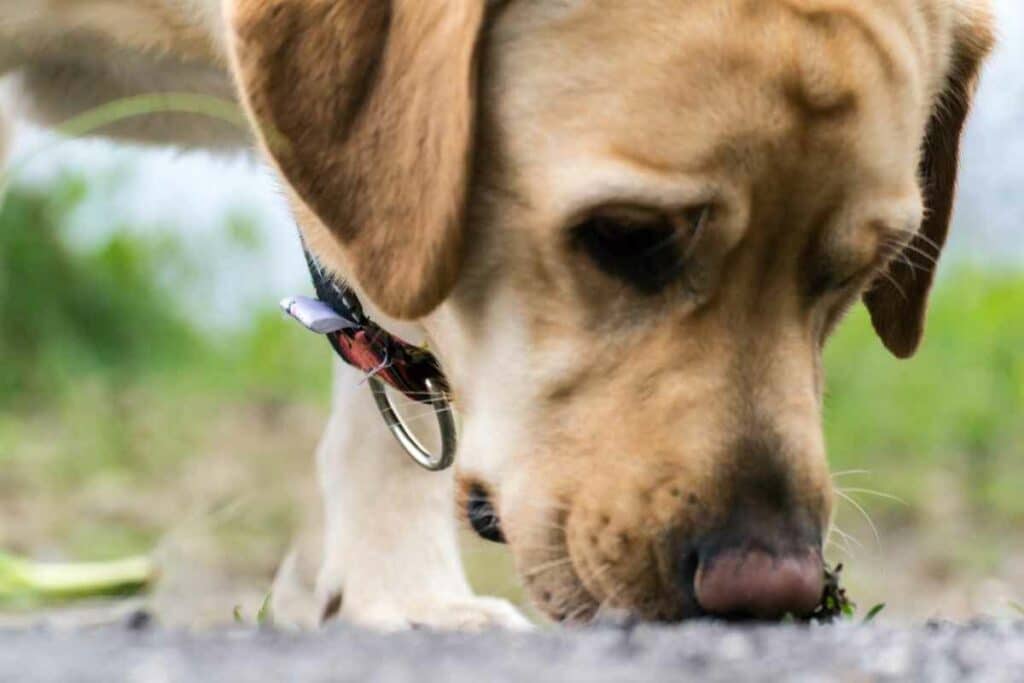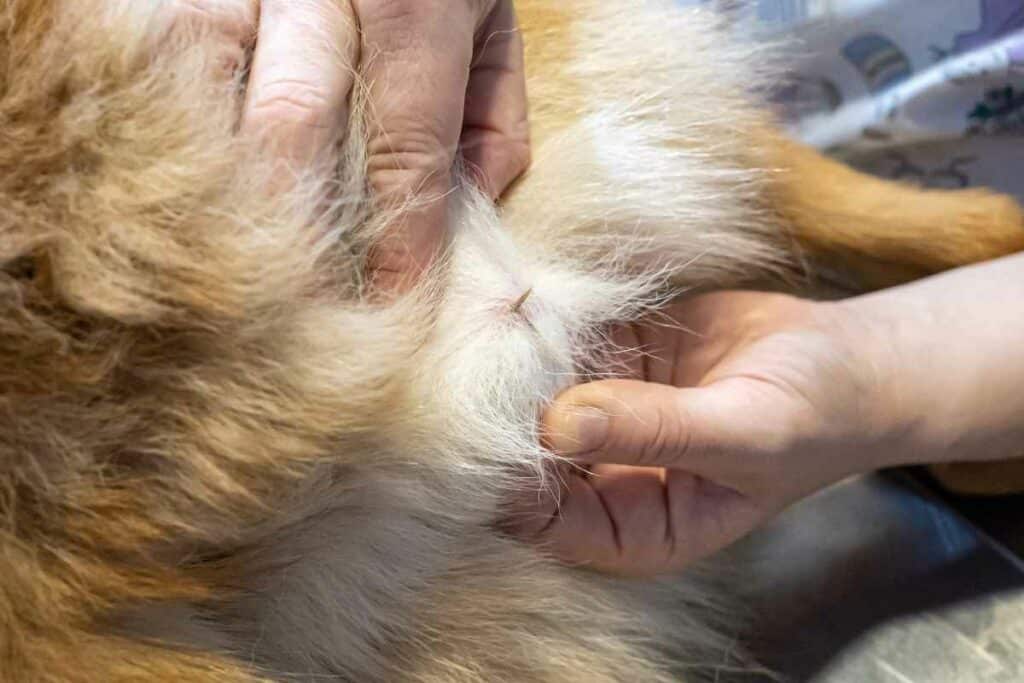If you live in certain regions in the US like California and Florida, you might be seeing many tiny eyes staring up at you.
These little balls are grass seeds, and your dog might eat them, or they may even get attached to your canine’s fur.
Now, you’re probably wondering if grass seeds are bad for dogs. Don’t worry; we’ve got you covered when it comes to this question.
In this article, we’ll go over everything there is to know about dogs and grass seeds, from how hazardous grass seeds are to your dog to how to keep grass seeds from harming your dog.
So, let’s dive in!
To answer the important question, yes, grass seeds can be quite harmful to your dog. Although dogs are carnivores, which means that they eat meat, they can also eat grass seeds. But the harm doesn’t only happen from ingestion; dogs may get harmed if the grass seeds get stuck to their fur as well.
And now, let’s see why grass seeds are considered a risk.
Why Are Grass Seeds a Risk to Dogs?
Grass seeds can stick to fur due to their pointed head and arrow-shaped fibers, and then penetrate the dog’s body.
Also, their awns make their removal extremely difficult; once they’re in the body, it’s challenging to expel them.

Moreover, the seeds can become lodged practically anywhere on a dog’s body, from their eyes and ears to their footpads, and can also migrate inside the body.
These seeds can induce infection, resulting in inflammation and severe swelling, which can progress to an abscess.
Also, the passage of dirt from the seeds into the dog’s body can cause additional complications. To make things worse, grass seeds can’t generally be broken down; they must be eliminated.
But, in case grass seeds reach the stomach after being swallowed, they can be digested.
However, they can still breach the digestive tract and penetrate the surrounding tissues and organs, spreading to other parts of the body and causing further infection.
What Are the Symptoms of Grass Seed Penetration?
Whenever a grass seed enters your dog’s body, it can affect it in different ways, depending on the affected area.
Below is a chart of the symptoms that appear on dogs impacted by grass seeds.
The Symptoms of Dogs Affected by Grass Seeds
| Affected Area | Symptoms |
|---|---|
| Skin | – Chewing on the skin of the affected area – Redness and swelling – Visible grass seeds outside the skin |
| Eyes | – Tears of discharge – Redness and swelling – Rubbing of the eye |
| Ears | – Head tilted to one side – Itchy, irritated ears – Redness – Shaking the head constantly scratching with paws or against surfaces |
| Nose or Lungs | – Pawing at the nose – Sneezing – Nasal discharge – Breathing difficulties |
| Mouth or Throat | – Coughing – Retching – Difficulty eating and drinking – Refusing to eat – Swelling in the throat |
| Paws | – Excessive licking – Redness and swelling – Limping |
| Genitals | – Excessive licking – Redness and swelling – Difficulty or pain during urination – Blood in urine |
What Are the Treatments for a Grass Seed Penetration?
If you find a grass seed attached to your dog’s body, try to remove it as soon as possible.
Also, if your dog has symptoms after eating grass seed, contact your vet immediately, and make sure that you don’t feed your dog anything else.

Keep in mind that if your dog has other health issues, such as diabetes, kidney disease, or heart disease, grass seed may be harmful and cause even more complications.
Once you’re at the vet:
- They’ll most likely conduct a thorough physical examination of your pet to confirm the diagnosis before removing the offending seed.
- They may use a specialized pair of tweezers to do this if it’s close to the skin’s surface and easily accessible.
- However, your dog may need sedation if your veterinarian feels that a grass seed has become lodged too deeply, in a susceptible location, or that pus or blood is flowing from a wound. If a grass seed is suspected of causing pain or infection but can’t be located, surgery may be necessary.
- Also, the vet may perform an X-ray to check the presence of any perforations, not the grass seed itself, as grass seeds don’t appear on an X-ray. If there’s a perforation, the vet will perform a surgical intervention.
It’s important to note that antibiotics are effective as a part of your dog’s treatment during an infection, but the grass seed needs to get out of your dog’s system first.
How Can You Protect Your Dog From the Dangers of Grass Seeds?
You can protect your canines from a grass seed’s infection by trying to prevent the process from the beginning:
- So, make sure that service dogs or pups who spend more time outside in dense foliage for enjoyment are wearing commercially manufactured vests that cover the chest and abdomen, as well as full head coverings.
- In addition, to prevent dogs from running across the tall grass, walk them on a short leash.
- After a walk or playtime outside, it’s a good idea to examine your dog when you get home. A grooming brush can assist in removing tangled seeds from a puppy’s fur, and this is also an excellent opportunity to look for foreign things in the dog’s muzzle, ears, and between its toes.
Plus, keep the hair between your dog’s toes cut.
Remember This: If you suspect that your dog is showing symptoms of grass seed penetration, don’t hesitate to seek medical help.
Final Thoughts
Grass seeds may appear tiny and innocuous, but if the dog came across them, here comes the trouble.
So, try to remove any seeds you find in between your dog’s toes, around their armpits, and around their eyes, especially after walking across the tall grass.
And don’t forget to make an appointment with your veterinarian in case you find a grass seed lodged or a lump that appears to contain one.
Read Also
- Are Rubber Plants Really Toxic to Pets? (All You Need to Know)
- The Complete Hedgehog House and Bedding Guide
- How to Stop Birds Eating Newly Sown Grass Seeds
